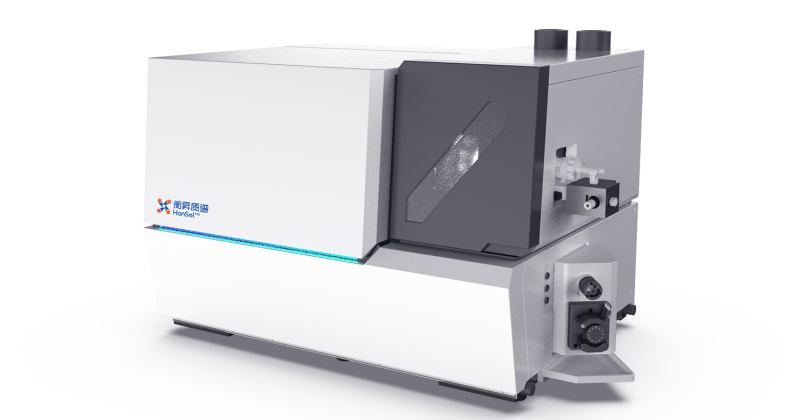**Analysis of Trace Elements in Petroleum** Petroleum is primarily composed of organic matter, with some compounds containing heteroatoms such as S, O, and N. Additionally, it widely contains trace metal elements at the 10⁻⁶ (ppm) or even 10⁻⁹ (ppb) level. These metal elements significantly impact petroleum processing technologies and product quality, particularly issues like catalyst contamination and equipment corrosion during refining. Trace metal elements such as Fe, Ni, Cu, and V can cause deactivation of catalytic cracking catalysts, while accumulation of trace elements like Na and K can lead to coking. In the analysis of micro/trace elements in oil products, ICP-MS offers significant advantages. ### Analysis and Applications of Trace Elements in Crude Oil Trace metal elements like Na and K in crude oil mainly exist in the form of water-soluble inorganic salts, while trace metals such as Ni, V, Fe, Cu, Zn, Pb, As, and Hg exist as oil-soluble organic compounds or complexes. According to literature, ICP-MS has been used to determine the content of 13 trace metal elements (including V and Ni) in 18 domestic and international crude oil samples, demonstrating good linearity (correlation coefficients ≥ 0.9995), relative standard deviations (RSD) < 5.0%, and standard addition recovery rates of 95.2%–116.2%. Additionally, the DRC-ICP-MS (Dynamic Reaction Cell) method uses O₂ as an auxiliary gas to prevent carbon deposition on the cone from organic matter and CH₄ as a reaction gas to optimize the determination of ⁵⁶Fe, ⁵²Cr, and ²⁴Mg. By measuring Pb and its isotopes in crude oil using ICP-MS, oil-source regional screening and oil spill identification methods can be established based on Pb content and isotopic characteristics. ### Analysis of Trace Elements in Fuel Oil Various additives are often added to petroleum refining products. Excessive Cu and Fe compounds can reduce the stability of vehicle gasoline, while illegally added metal compounds (e.g., Pb, Mn, Fe) can cause severe environmental pollution and health risks after combustion. The DRC technology has been applied to determine the content of Cu, Pb, Fe, Mn, S, and P in gasoline, enabling simultaneous multi-element analysis with good precision and accuracy that meets the testing requirements of vehicle gasoline standards. Silicon (Si) and phosphorus (P) in gasoline can cause serious environmental pollution when burned; Si can also deactivate catalytic systems, while high P content damages automotive catalytic converters. ICP-MS with an organic injection system (DRS) has been used to determine trace Si and P in gasoline, achieving detection limits of 0.18 µg/L for Si and 0.34 µg/L for P, which meet the analytical requirements for gasoline samples. High concentrations of V, Al, Ca, Zn, Ni, Na, Fe, and Si in marine fuel oil degrade oil quality, but ICP-MS can effectively determine these elements after microwave digestion of marine fuel samples. Trace inorganic elements in diesel, particularly active sulfides, cause equipment corrosion, and SOₓ generated from sulfide combustion is a major air pollutant that also corrodes cylinders and exhaust pipes. ### Analysis of Trace Elements in Naphtha Naphtha is a major product of many refineries and a critical chemical raw material. The content of trace toxic elements (e.g., Pb, Hg, As) in naphtha is a key quality control indicator. The Si content in naphtha is typically required to be controlled at ~10 mg/kg, as high Si levels can poison hydrofining catalysts. The ICP-MS method is simple, rapid, and highly accurate, making it suitable for batch detection of Si in light petroleum samples.
**Analysis of Trace Elements in Lubricating Oil** Lubricating oil is a critical material for ensuring the normal operation of equipment. The content of added elements (such as Mg, Mo, Ca, Zn, Ba, S, P, etc.) in lubricating oil is one of the important indicators for evaluating oil quality and performance. The contents of elements like Ni, Ti, Cr, Fe, Sn, Al, Mn, Si, Pb, Cu, and Ag serve as key parameters for monitoring the service performance of lubricating oil and predicting various lubrication-related mechanical failures. **Analysis of Trace Elements in Residual Oil, Petroleum Asphalt, and Petroleum Coke** Residual oil is the residual oil obtained after crude oil distillation, commonly used for producing products such as petroleum coke, residual lubricating oil, and petroleum asphalt, and is also an important raw material for ethylene production via cracking. Numerous literatures and testing standards indicate that the ICP-MS method is simple, rapid, and accurate, making it suitable for quality control of residual oil.



